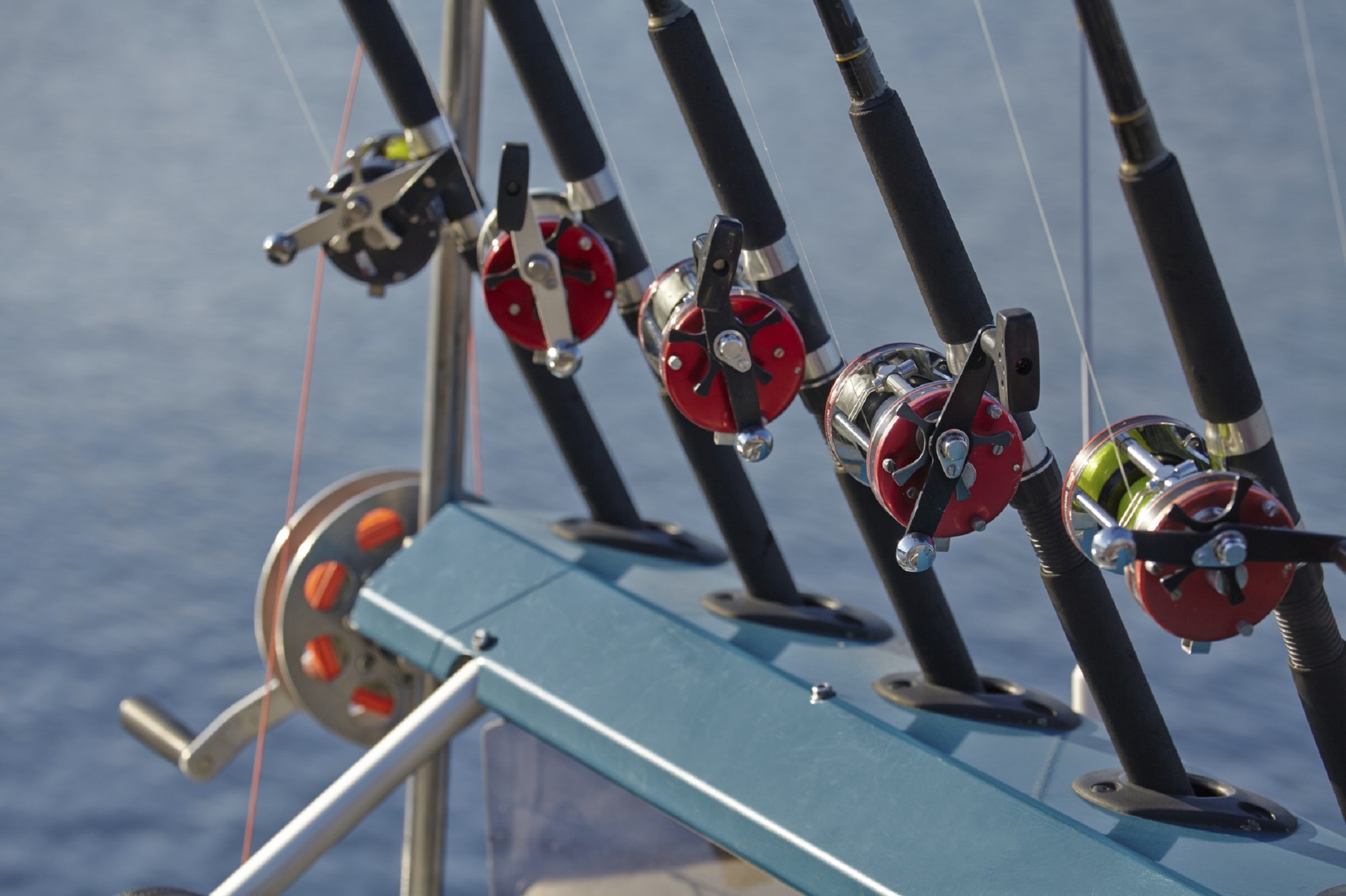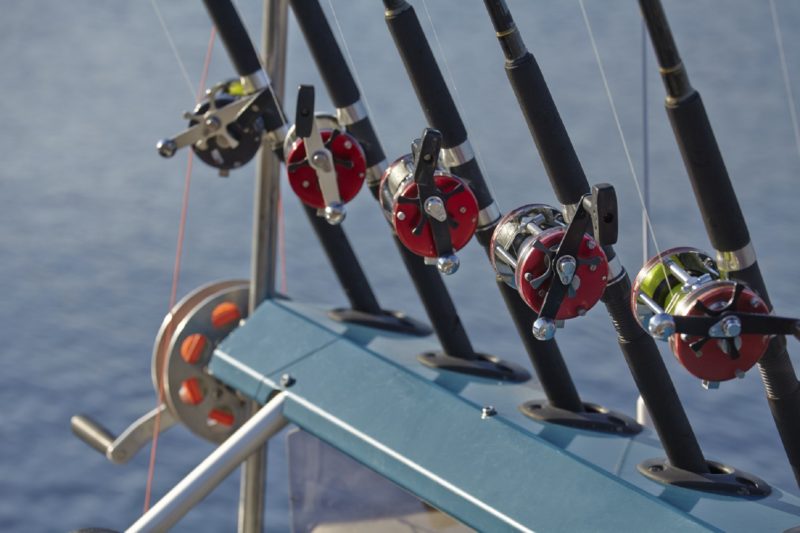Fishing is the most popular recreational pastime in America; it boasts more active enthusiasts than golf, tennis and sailing combined. Saltwater fishing alone draws in nearly 25 million participants nationwide in a single year. Whether it be trolling offshore for big tuna, drifting across a placid bay for flounder or fishing the skinny water of the intertidal flats for redfish and trout, the plurality of venues and fish species available to saltwater anglers can seem virtually endless.
Basic light to medium tackle may be able to cover you sufficiently in most situations when fishing in freshwater. However, depending upon whether you happen to be deep sea fishing, drifting in a small skiff a half mile off the beach, surf fishing onshore or from a bridge or pier, you will need to carefully match your gear and technique to the circumstances at hand.

Fishing Gear and Saltwater
The first thing that fledgling saltwater anglers need to understand is the primary difference between fresh and saltwater fishing, which is inherent in the water itself. Adding salt to the equation can complicate things negatively in regard to the longevity of your gear when you do not maintain it properly.
Salt rapidly accelerates the corrosion process, and the resulting rust can dramatically weaken anything metallic that it comes in contact with, including your reel and attached hardware as well as the line guides on your fishing rod. The good news is that it can be easily avoided by simply washing down your rod and reel with fresh water from your garden hose every time that you return from fishing in saltwater. Spraying your reel afterward with a silicon-based lubricant like WD-40 will also help greatly in extending the life of your gear. Saltwater tackle is generally somewhat sturdier than gear that was designed for use in freshwater, but you must still do your part in order to keep it functional.
Basic Tackle
Although high-grade conventional saltwater reels and rods provide the necessary backbone for big game anglers fishing offshore, those who are just beginning to fish in saltwater are better off starting out with a quality medium weight spinning combo. Unless you are already well versed in the art of casting a conventional reel, a spinning reel will help you to cast further while avoiding the frustrating backlashes and bird’s nests that are inherent with conventional gear. A quality spinning combo that is rated for 10 to 25 test line will also cover you in a variety of different venues from surf and pier fishing to drifting in bays or intertidal estuaries.
Fishing Line
Selecting and spooling up with the right line for the type of fishing that you plan to do is an essential component in successful saltwater fishing. Because of the damage dealt out by constant exposure to saltwater and intense sunlight, it is important to always buy a good quality fishing line and change it often. Stick with the brands sold by major manufacturers and avoid ‘bargains’ on lesser-known products that may fail when put to the test. Losing the fish of a lifetime simply because you momentarily embraced a false sense of economy is a tough one to swallow.
The type of line that you choose is also important. For generations, monofilament line was the most popular among saltwater anglers. In recent years, however, the use of specialized braided lines has increased exponentially. Braided line has a much thinner diameter than monofilament line of the same pound test, which basically extends the line capacity of your reel. It is also more resistant to abrasion.
Thinner braided lines tend to cast easier and farther than most monofilaments. The only drawback is that braided line usually requires a leader in order to achieve optimum performance. But no matter what type line you select, this best types of leaders to use are ones made from fluorocarbon, which becomes virtually invisible to fish once it has been submerged.
Hooks
Always match your hook to the size of the bait that you plan to use; if it is too big it will look unnatural and discourage attention, but if it is too small a striking fish could miss the hook altogether and steal the bait.
The hooks that are usually employed for saltwater application include the J hook, the live bait hook and the circle hook, each of which has its own specialized application. The J hook can either be a ‘baitholder’ with a few barbs on the shank or a standard J with a smooth shank. These are best for fishing with chunk or strip bait and allow you to hook the bait multiple times in order to keep it secure.
Live bait hooks have a much shorter shank that is smooth and is designed to be pinned through the nose, under the collar, just beneath the dorsal or through the anal opening of a live baitfish. It provides the opportunity for the bait to swim freely in a natural manner that will eventually provoke a strike from a hungry game fish. As always, it is important to match the size of your hook with the size of bait that you are using.
Over the past decade or so, the circle hook has become increasingly popular because it tends to hook up in the corner of the fish’s mouth rather than ending up hooked deep in the gullet, which greatly decreases the chances of a successful live release.
Baits
Depending upon the type of saltwater fish that you are targeting, the most effective baits are usually the ones that most closely match the normal diet of that species. This might be anything from clams, mussels and sea worms to shrimp, squid and appropriately sized baitfish. Many fish will also strike chunk and strip baits, which tend to exude enticing oils through the water column.
Lures
While using natural baits are one way to catch fish in saltwater, properly presented artificial baits and lures can also be the key to a successful day out on the water.
There are several types and designs that can be highly effective when used in saltwater. They include, but are not limited to, hard baits like plugs, poppers and spoons and soft baits such as plastic swimbaits, grubs and slugs. The latter category also includes recently developed biodegradable baits like Berkley GULP!, which incorporate pheromone-based scents that chemically provoke a feeding response in fish.
Unless you are trolling, the movement of submerged artificial baits are controlled almost exclusively by the speed of your retrieve and the action that you impart to the lure with the tip of your fishing rod. Always try to combine those two factors in a way that will mimic the natural action of the artificial you are using.
Knots
The strength of the knot that connects your main line to the hook or lure is your most important link in successfully fighting a big saltwater bruiser …so make it strong! There are numerous effective knots that can work well in a variety of applications, but one personal favorite is the double palomar; it is both easy to tie and extremely dependable.
Tides
Tidal movement affects just about every type of saltwater fishing venue except the blue waters offshore. In order to optimize your angling success, it is vital to use the changing of the tides to your advantage. As a rule of thumb, it is a good idea to arrive at your chosen fishing destination at least an hour before the high tide is scheduled to peak, and plan to continue fishing for at least another half hour thereafter.
Additional Gear
When you head out to the beach, bay, lagoon or jetty there are a few other items that you might want to consider taking along as well as your fishing gear, a well-stocked tackle box and a bucket. These include a hat, polarized sunglasses, a high SPF sunscreen, a folding chair and sufficient drinking water or electrolyte beverages to rehydrate yourself under a potentially blazing sun. There is, however, one additional thing that you should always bring along with you on your fishing adventure; and that is patience.
Where to start
Among the wide spectrum of viable saltwater fishing venues that are available, perhaps the best of these for beginning saltwater anglers to start honing their skills is on a public fishing pier. Many offer free access, and they provide the opportunity to either fish closer to the shoreline or go out to the end of the pier in search of different, and often larger species. Depending upon where the pier is located and the time of year it is, fishing the furthest end of the structure could result in hooking up with a fat grouper or a king mackerel without even getting your feet wet.







